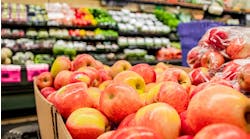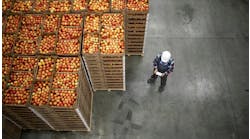Hot, summer weather brings family vacations, neighborhood cookouts—and increased risks for Listeria and other food borne pathogens in processing plants.
From a sanitation perspective, it’s important to manage seasonal changes in food processing facilities. As temperatures rise, plant managers and quality assurance staff need to be especially vigilant to prevent food safety issues.
Managers should be prepared to address these hot weather sanitation challenges:
- Contamination risks. With summer comes construction, farm field work and other soil disruptions that release Listeria from the soil into the air. Strong winds can blow these pathogens over long distances. Most plants’ filtering systems will not effectively filter out Listeria. In addition, workers may be tempted to prop open entrances, emergency exits or loading dock doors during warm days—bringing in potential contamination.
To prevent pathogen hot spots, plant managers should step up the number and frequency of environmental monitoring swabs.
Don’t be satisfied with a negative Listeria test, as it is likely you are not looking in the right places. Listeria season calls for intensive sanitation in niches and areas that aren’t easily cleaned. Aggressively scrub all product contact surfaces to remove and prevent biofilms where bacteria can grow.
- Bringing the outside in. During warm weather, plant employees often spend more time outdoors in their off-work hours and can carry contamination into the plant on their shoes and boots. Implement a thorough boot control program, along with extra steps to examine materials moving from receiving docks into food processing areas. Physical barriers, such as doorway foam or Quat granules on high-traffic floors, can help prevent cross-contamination risks.
- Condensation. High temperatures and humidity in summer can increase condensation inside the plant. Condensed water often harbors and transports microbes such as Listeria onto food and food contact surfaces. Condensation must be removed prior to sanitation.
Now is a good time to evaluate your plant’s HVAC system and modify it if needed to correct humidity imbalances in the production area. A sanitation expert can help inspect and audit the plant, identify condensation problem areas and develop a plan to mitigate them.
- Production demands. Fruit and vegetable processors often experience huge increases in product flow during summer months.
As production increases, plant managers need to keep a keen eye on sanitation. When the plant is busy and sanitation windows are short, it’s tempting to put off deep cleaning steps. A contract sanitation team can help plants adhere to the master sanitation schedule during these busy times.
Sanitation chemical programs may need to be reevaluated in summer. To ensure maximum effectiveness, consider using both detergents and sanitizers in the upper end of EPA-approved ranges.
Editor’s Note: This post was sponsored by PSSI. For more information visit www.redefinecleanpssi.com.

